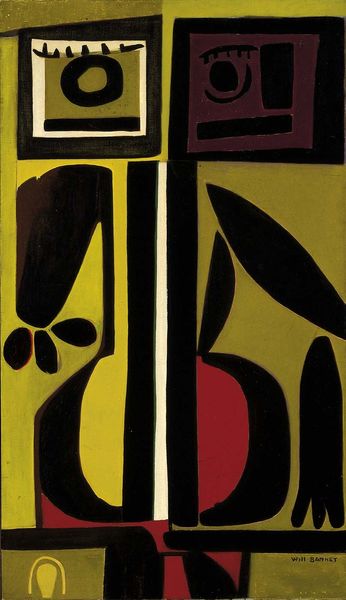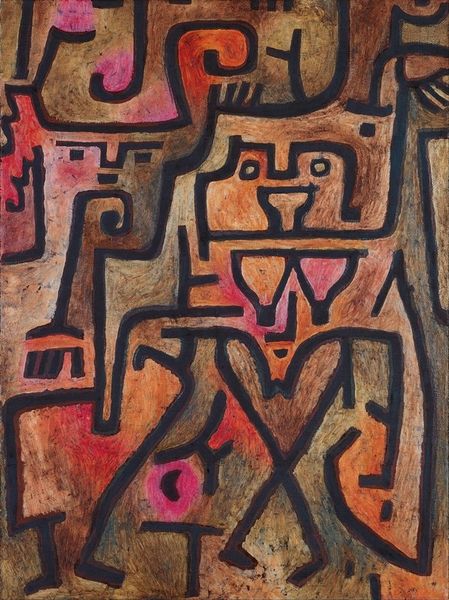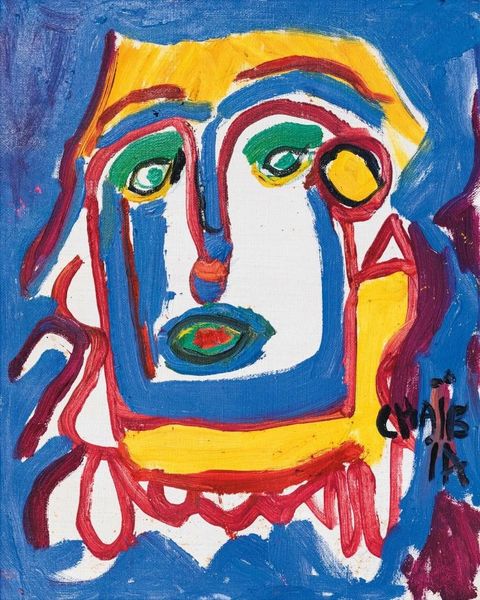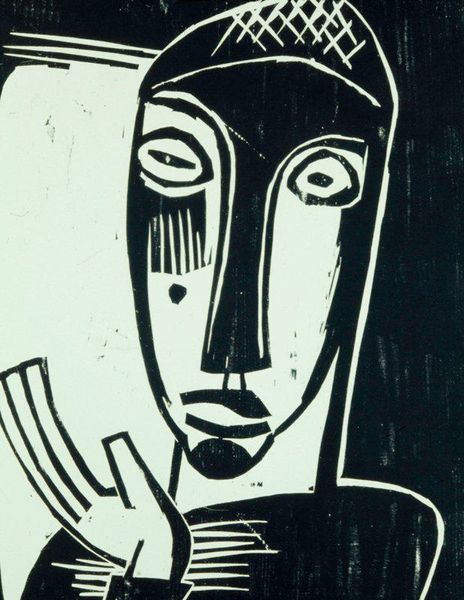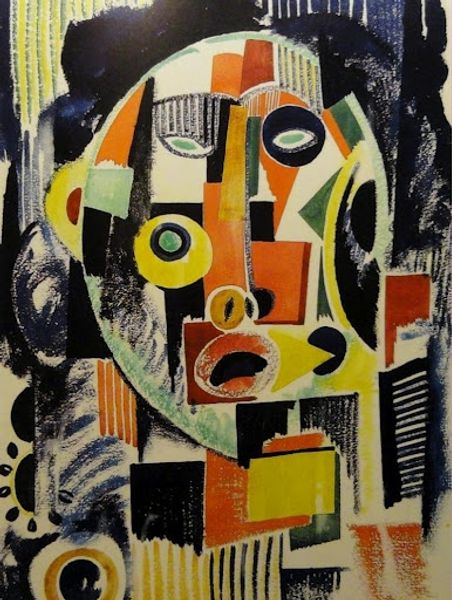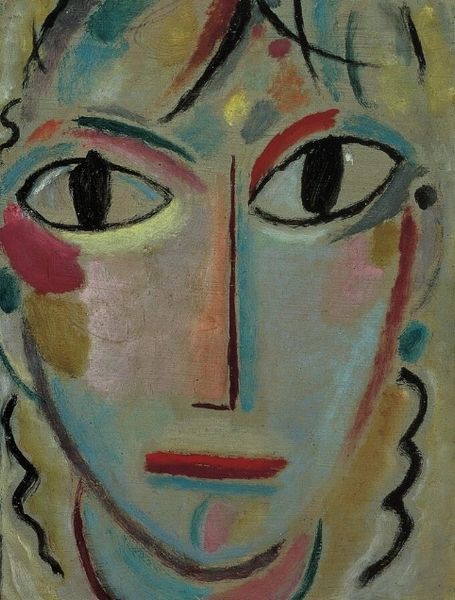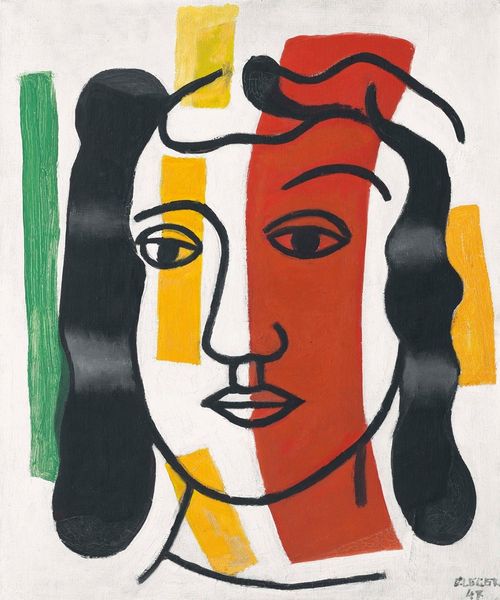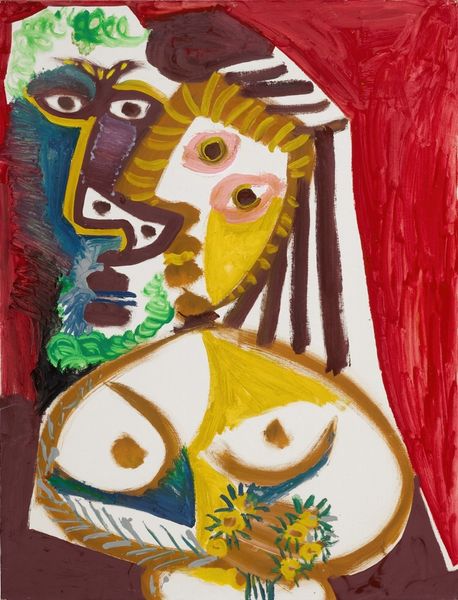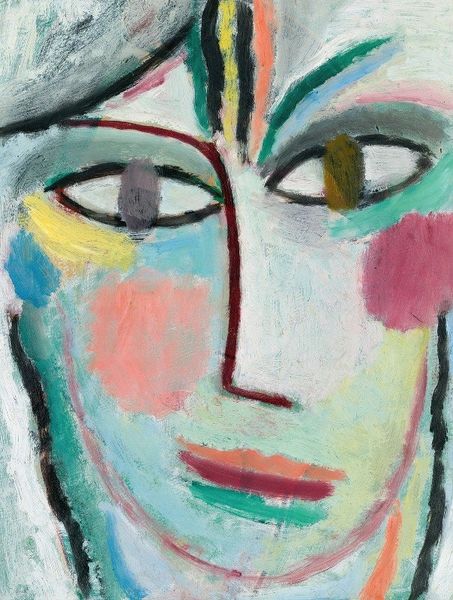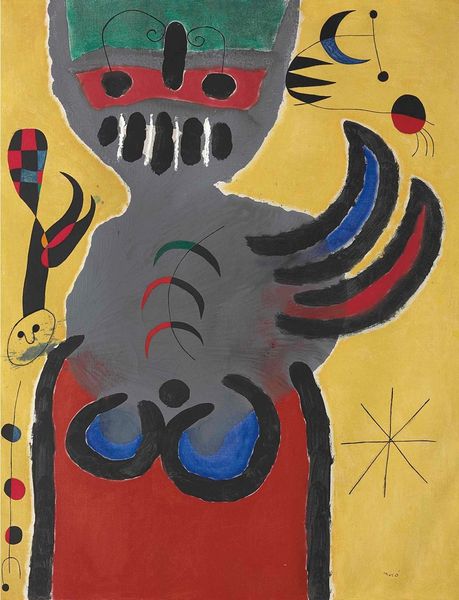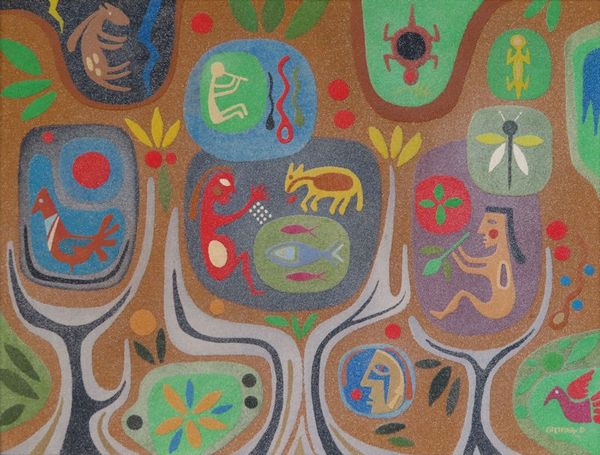
Copyright: Modern Artists: Artvee
Fernand Léger's painting, "Tête de femme," presents us with bold colors and simplified forms, characteristic of his unique approach to Cubism. The woman's face is rendered in a striking red semi-circle, juxtaposed with a yellow rectangle that suggests another face, or perhaps a hand, all outlined with assertive black lines. A rectangle of green adds balance. Léger's style, often termed "Tubism," emphasizes the cylindrical and machine-like qualities of his subjects. Here, the human figure is broken down into elementary shapes, mirroring the industrial aesthetic of the early 20th century. The interplay of flat planes and stark outlines challenges traditional notions of depth and perspective. The composition invites us to question the nature of representation. Is this a portrait, or an exploration of form and color? Léger’s abstraction prompts a visual deconstruction, inviting us to find meaning not in mimetic representation, but in the dynamic relationships between the elements themselves. Through this emphasis on the structure and form, Léger pushes us to consider how art can engage with, and reflect, the industrialized world.
Comments
No comments
Be the first to comment and join the conversation on the ultimate creative platform.

